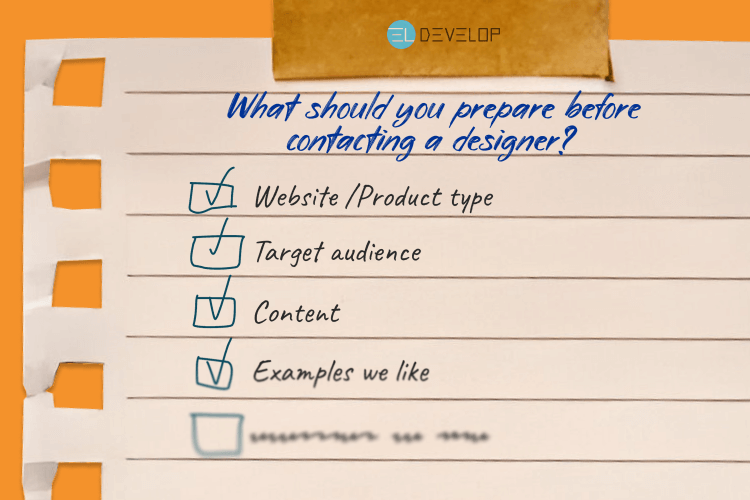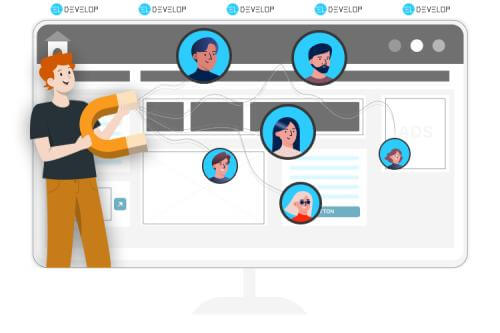
Ordering Website Designs: What’s Required for Different Types
UI/UX design for website is never a one-size-fits-all task. Different kinds of websites serve different purposes, attract different audiences, and demand different features. Whether you're ordering a design for a landing page, an e-commerce store, a CRM system, or a general website, understanding what each type requires will save time, money, and effort—and ensure that the final product aligns with your business goals.
Landing Page Design
Landing pages are single, goal-oriented pages typically used for marketing campaigns, product launches, or lead generation. When ordering a landing page design, clarity and focus are essential. You need to define one core objective: do you want the visitor to sign up, make a purchase, download something, or contact you?
To help your designer, provide a concise and compelling value proposition, a strong call to action, and any visuals or media you plan to use (such as product photos, videos, or testimonials). Also, mention if you're running ads or tracking performance—this affects where and how certain elements are placed. Simplicity, speed, and conversion optimization are key priorities in landing page design, so make sure your request reflects that.
E-commerce Website Design
Web Design Trends to Expect in 2022
E-commerce websites are more complex and require careful planning. The main focus here is user experience, smooth navigation, trust-building elements, and secure transactions. When ordering an e-commerce design, you need to outline your product structure—how many categories and products you’ll have, how detailed your product pages should be, and what kind of checkout experience you're aiming for.
It’s important to communicate whether you need features like filters, product comparisons, customer reviews, promo codes, or integration with payment gateways and shipping providers. Product photos, pricing logic, and inventory management also influence the design. The more you can share about your product line, sales process, and target audience, the better the designer can shape a layout that supports conversions and customer loyalty.
CRM System Interface Design
CRM (Customer Relationship Management) interfaces are functional tools used internally by teams to manage client relationships, sales processes, and data workflows. When ordering a design for a CRM system, usability and efficiency are more important than visual appeal. The design should support smooth workflows, logical data presentation, and easy navigation through complex information.
To get an effective CRM design, you must define your user roles (sales manager, support agent, admin, etc.), core actions (adding contacts, managing tasks, creating reports), and the kind of data that needs to be visible at a glance. Providing diagrams of workflows or even rough wireframes will help a lot. Design requests for CRM systems should prioritize speed, simplicity, and customization to suit specific team needs.
UI/UX Design for Ecommerce: Boosting Sales Through Design
General Website Design (Corporate, Portfolio, Personal)
General websites cover a wide range of use cases, from company websites to creative portfolios or personal blogs. When ordering a design for this type of site, your content and brand identity are essential starting points. Describe what the website is about, who it’s for, and what action you want visitors to take—whether it's to learn about your services, view your work, or get in touch.
You should provide any existing branding materials, such as a logo, color scheme, and content like text, images, or videos. If you’re not sure about the style, it’s very helpful to share a few examples of websites you admire. The design process will then balance aesthetics with usability, ensuring that the website reflects your personality or business identity while remaining easy to use and responsive on all devices.
Ordering a website design is not just about choosing colors and layouts—it’s about defining purpose, gathering resources, and communicating clearly with the design team. Each type of website has its own demands: landing pages focus on conversion, e-commerce sites on usability and trust, CRM systems on workflow clarity, and general websites on content presentation and branding.
The more context you provide—about your goals, content, audience, and expectations—the more successful your project will be. A well-prepared order leads to a well-designed site.
Recent Articles
- Why Quality Assurance Is the Unsung Hero of Web Development
- Dark UX: Scary Design Mistakes That Haunt Users
- Ranking the Top Mobile App Development Companies: Who Leads the Industry in 2025
- Top WordPress Developers in the Industry (2025 Edition)
- Alternatives to Bootstrap: MaterializeCSS and Tailwind CSS


